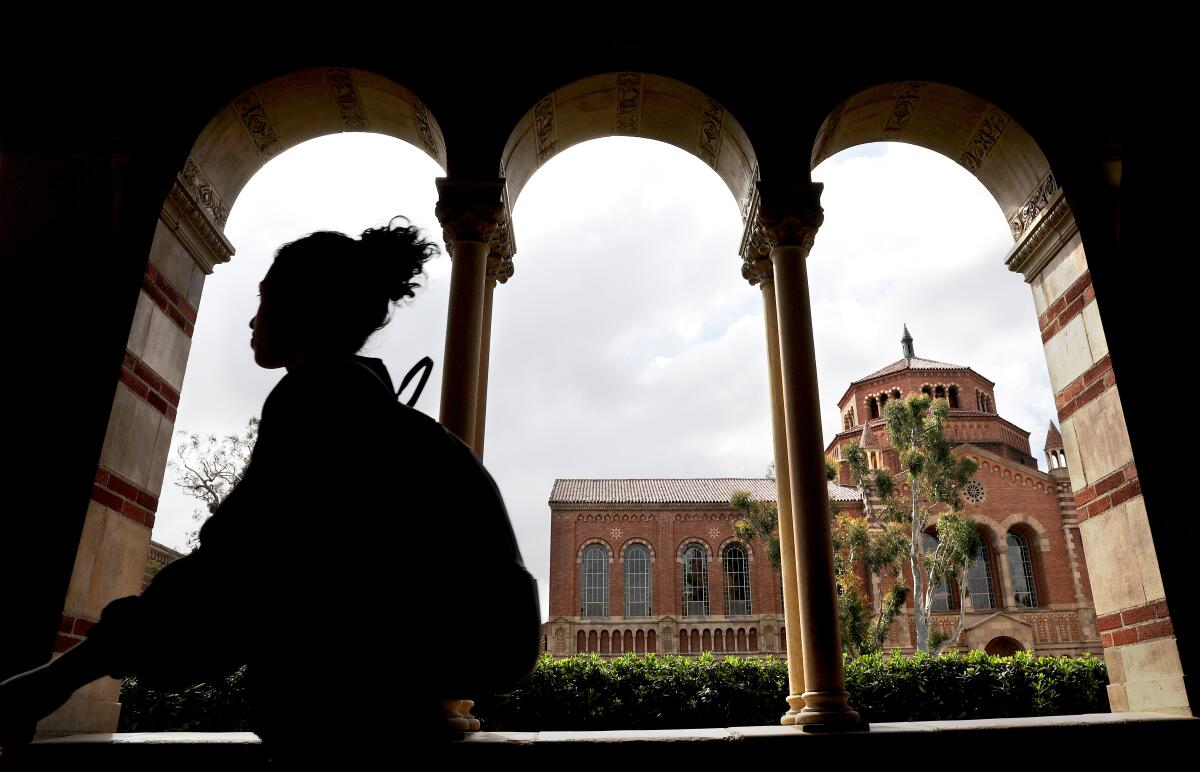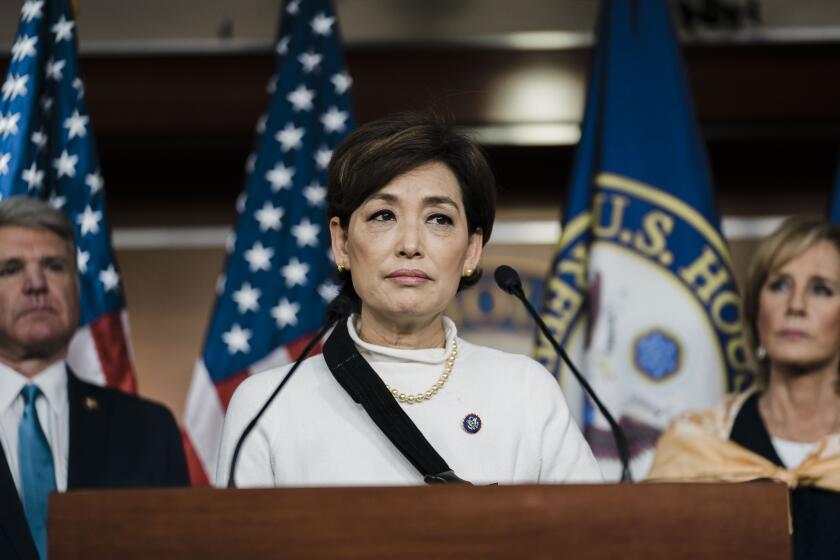Apodaca: While we examine preference in college admissions, let’s look at wealth and privilege

- Share via
If you listen carefully you might detect a low rumbling sound from the ground shifting under higher education as the aftershocks from last month’s Supreme Court earthquake continue to reverberate.
The court’s ruling on the affirmative action admission policies of Harvard and the University of North Carolina effectively ended race-conscious admission programs at colleges and universities across the country, reversing decades of precedent.
The outcry over the ruling was swift and fierce. Critics — and there are many — pointedly observed that virtually all other types of admissions preferences, which usually favor the rich and well-connected, remain untouched. Now, pressure is building on universities nationwide to put an end to these longstanding practices.
The biggest target at the moment is legacy admissions.
Legacies, a practice born out of bigotry, also present the most obvious target. Such preferences were adopted as policy at many institutions about a century ago as a means to exclude Jewish and Catholic applicants and favor those from an Anglo-Protestant background.
If you think about it, there couldn’t be a more blatantly cynical, spectacularly egregious example of pandering to people whose influence derives from generational, inbred privilege. The group that is least in need of extra help gets a big birthright boost, putting the lie to our American ideal of meritocracy. There’s no doubt this practice should end.
Yet today, many colleges and universities justify their continued use by claiming that applicants with a family history at a certain institution are more likely to accept an offer to enroll. The bigger factor, however, is the belief that legacy alumni become major donors at higher rates than other, non-legacy admits — although that assertion has been challenged by some studies.
Not all competitive colleges and universities use legacy preferences. Notably, the University of California system does not; nor do Pomona, Amherst, Johns Hopkins, the University of Texas and MIT.
But about three-quarters of the nation’s top-100 universities on U.S. News and World Report’s list continue to offer legacy boosts.
Despite the compromised ethics of such favoritism, for too long we have remained fatalistic, tacitly accepting that this is just the way of the world and little can be done to change it.
Now many believe that the time for such resignation to end has finally arrived. It’s an ironic twist that it took the Supreme Court’s controversial affirmative action ruling to serve as kick-in-the-pants motivation — and legal rationale — for a movement to challenge these policies.
The benefits of participating in youth sports are legion, but there are also unintended consequences such as eating disorders, injuries, burnout and more, writes Daily Pilot columnist Patrice Apodaca.
Since the ruling, a civil rights group filed a complaint urging the Education Department to investigate Harvard’s legacy and donor admissions. The complaint asked more than 1,500 colleges and universities to end such practices, claiming that they discriminate against minority applicants. More legal action could follow.
At the same time, the state of Massachusetts is considering levying a new fee on institutions that use legacy preferences.
The effort does not stop there. Other types of admissions bumps have also come under fire.
For example, Massachusetts lawmakers have proposed fining colleges and universities that employ the admissions strategy known as early-decision applications, or ED. These are applications that are submitted before the general round of applications and have a higher rate of acceptance.
ED also favors affluent students because it requires those admitted through this process to make a binding decision to attend before knowing if financial aid will be available.
And there’s more. Critics of admissions boosts are also sounding off about the relaxed standards often afforded the offspring of staff and faculty, as well as those of celebrities, politicians and wealthy business people who are viewed as potential big-ticket donors and opportunities to burnish schools’ elite reputations.
Even admissions policies for athletes are coming under increased scrutiny.
Aside from football, basketball and track and field, preferential treatment for athletes — including lower academic thresholds and hefty scholarships — heavily favors more affluent and largely white applicants who have greater access to expensive training, particularly for niche sports such as lacrosse, fencing and crew.
Will any of these efforts to make college admissions more fair lead anywhere?
Maybe. If the pressure continues to build, my guess is that at least a few more universities will vow to end, or modify, their legacy admissions policies.
That would be a welcome outcome. But forgive me if I’m just a teensy bit skeptical.
Many of our institutions of higher learning — particularly the so-called “prestigious” ones — have proven themselves to be masters of sleight of hand, adept at distraction and illusion. And cultivating ties to the wealthy and powerful is part of their business model. Whatever happens, I suspect they’ll find ways to wiggle around pledges to end special treatment for otherwise entitled applicants.
More importantly, the sad truth is that the problems with college admissions don’t begin when it’s time for students to apply. The bigger issue is that too many children start out life with huge disadvantages, including substandard K-12 education. Their chances of attending name-brand universities are severely diminished long before they reach college age.
So, yes, legacy admissions are inherently unfair, and they shouldn’t exist. But making sure all kids have the same educational opportunities from the earliest ages — that must be our paramount goal.
All the latest on Orange County from Orange County.
Get our free TimesOC newsletter.
You may occasionally receive promotional content from the Daily Pilot.







